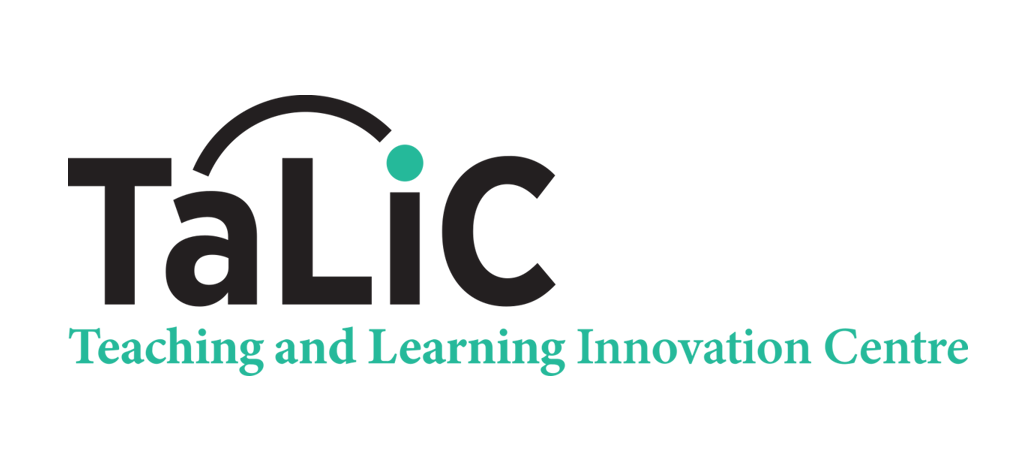TIPS
Summer Sandbox Series: Creative Online Course Designing
A Glossary of Key and Emerging Terms
Key Terms
E-learning
‘…uses computerised communication systems as an environment for communication, the exchange of information and interaction between students and instructors.’ (Bermejo, 2005)
Mobile learning (m-learning)
‘…e-learning using mobile devices such as smart phones, personal digital assistants (PDAs) and tablets, (which) allows learners to learn anywhere and anytime.’ (Karimi, 2016)
Blended learning
‘… blends online and face-to-face delivery. Substantial proportion of the content is delivered online, typically uses online discussions, and typically has a reduced number of face-to-face meetings.’ (Allen & Seaman, 2010)
Online learning
‘…learning and other supportive resources that are available through a computer.’ (Carliner, 2004, p.1); and ‘more complex online learning involves a larger amount of international interaction than hyperlinks.’ (Carliner, 2004, p.3)
Distance learning/ education
‘…is teaching and planned learning in which teaching normally occurs in a different place from learning, requiring communication through technologies as well as special institutional organisation.’ (Moore & Kearsley, 2012, p.2)
Asynchronous learning
‘…commonly facilitated by media such as e-mail and discussion boards, supports work relations among learners and with teachers, even when participants cannot be online at the same time.’ (Hrastinski, 2008)
Synchronous learning
‘…where remote students participate in face-to-face classes by means of rich-media synchronous technologies such as video conferencing, web conferencing, or virtual worlds.’ (Bower et al., 2015). It allows real time interactions among teachers and students while asynchronous learning does not.
Hybrid learning
…involves ‘deliberately planned mix of online/face-to-face’ learning (Bates, 2020). Typically, ‘a significant portion of the learning activities have been moved online, and time traditionally spent in the classroom is reduced but not eliminated.’ (Garnham & Kaleta, 2002).
Flexible learning
‘… offers multiple delivery modes so that students can choose which delivery mode(s) to use for instructional and other learning purposes.’ (Sener, 2015)
Hyflex (Hybrid – flexible)
‘… allow(s) students to seamlessly shift between attending class in person, joining in synchronous online, or catching the class asynchronously later – and they can change their mind, fluidly, from day to day.’ (Bates, 2020).
Emerging Terms
Emergency remote teaching (ERT)
‘… is a temporary shift of instructional delivery to an alternate delivery mode due to crisis circumstances. It involves the use of fully remote teaching solutions for instruction or education that would otherwise be delivered face-to-face or as blended or hybrid courses and that will return to that format once the crisis or emergency has abated.’ (Hodges et al., 2020)
Con-current classroom
A concurrent classroom ‘has people online and in person in the same class at the same time’. (Ladd, 2020)
Networked learning
‘…involves processes of collaborative, co-operative and collective inquiry, knowledge-creation and knowledgeable action, underpinned by trusting relationships, motivated by a sense of shared challenge and enabled by convivial technologies. (It) promotes connections: between people, between sites of learning and action, between ideas, resources and solutions, across time, space and media.’ (Networked Learning Editorial Collective, 2020)
References
- Allen, I. E., & Seaman, J. (2010). Class differences: Online education in the United States. Sloan Consortium. Retrieved from https://files.eric.ed.gov/fulltext/ED529952.pdf
- Bates, T. (2020, July 14). Tony Bates CICan Webinar [Video]. Youtube. https://www.youtube.com/watch?v=bz-_KNi23eQ&feature=youtu.be
- Bermejo, S. (2005). Cooperative electronic learning in virtual laboratories through forums. IEEE Transactions on Education, 48(1), 140–149.
- Bower, M., Dalgarno, B., Kennedy, G. E., Lee, M. J., & Kenney, J. (2015). Design and implementation factors in blended synchronous learning environments: Outcomes from a cross-case analysis. Computers & Education, 86, 1–17.
- Carliner, S. (2004). An Overview of Online Learning (2nd ed.). Armherst, MA: Human Resource Development Press.
- Garnham, C., & Kaleta, R. (2002, March 20). Introduction to hybrid courses. Teaching with Technology Today, 6(8), Retrieved from https://hccelearning.files.wordpress.com/2010/09/introduction-to-hybrid-course1.pdf
- Hodges, C., Moore, S., Lockee, B., Trust, T., & Bond, A. (2020, March 27). The difference between emergency remote teaching and online learning. EDUCAUSE Review. Retrieved from https://er.educause.edu/articles/2020/3/the-difference-between-emergency-remote-teaching-and-online-learning
- Hrastinski, S. (2008). A study of asynchronous and synchronous e-learning methods discovered that each supports different purposes. EDUCAUSE Quarterly, 4, 51–55.
- Karimi, S. (2016). Do learners’ characteristics matter? An exploration of mobile-learning adoption in self-directed learning. Computers in Human Behaviour, 63, 769–776.
- Ladd, T. (2020, June 19). Optimizing concurrent classrooms: Teaching students in the room and online simultaneously. Forbes. Retrieved from https://www.forbes.com/sites/tedladd/2020/06/19/optimizing-concurrent-classrooms-teaching-students-in-the-room-and-online-simultaneously/#50645ba93451
- Moore, M.G., & Kearsley, G. (2012). Distance Education: A Systems View of Online Learning (3rd ed.). Belmont, Calif.: Wadsworth Cengage Learning.
- Networked Learning Editorial Collective (2020). Networked learning: Inviting redefinition. Postdigital Science and Education. Advanced online publication: https://doi.org/10.1007/s42438-020-00167-8
- Sener, J. (2015, April 4). Updated e-learning definitions. The Online Learning Consortium Blog. Retrieved from https://onlinelearningconsortium.org/updated-e-learning-definitions-2/



